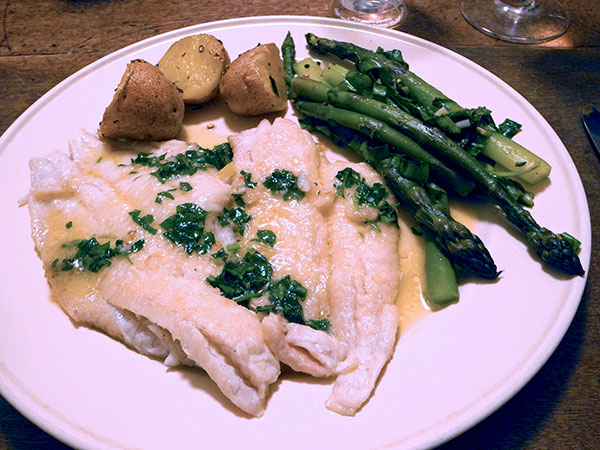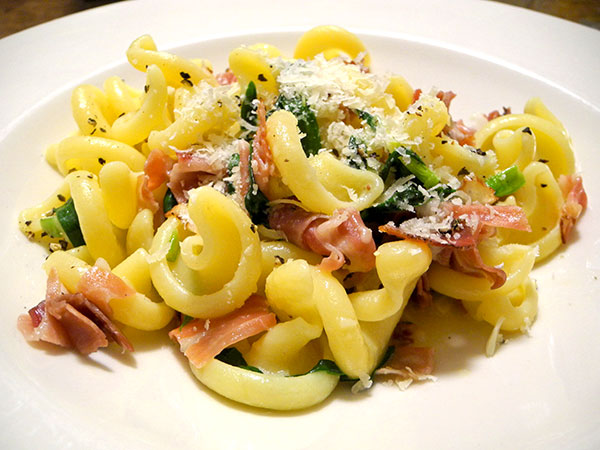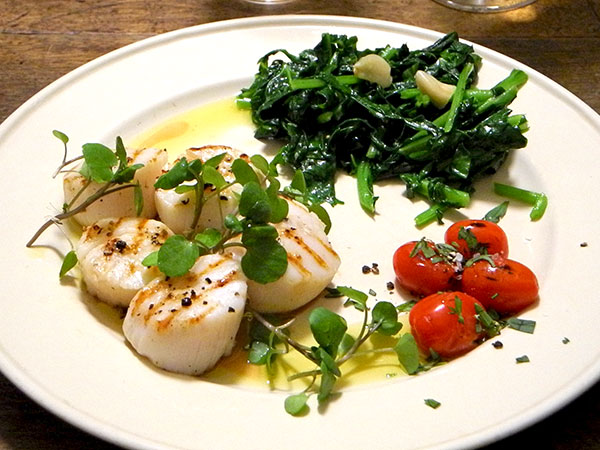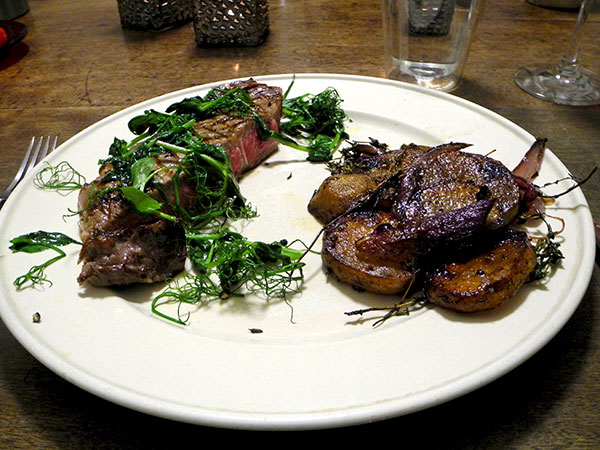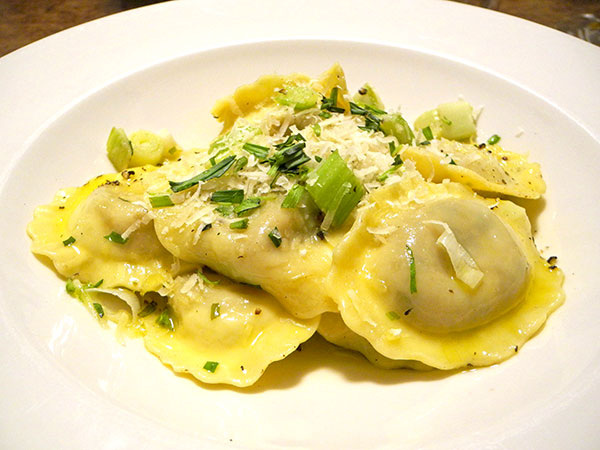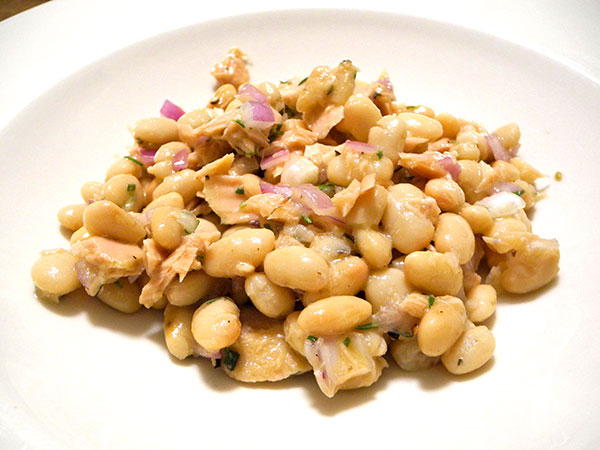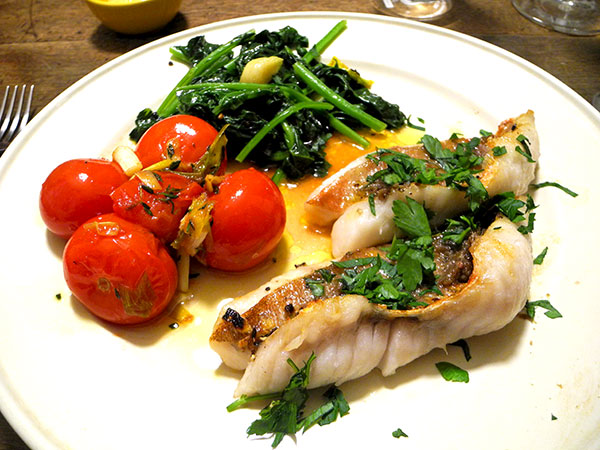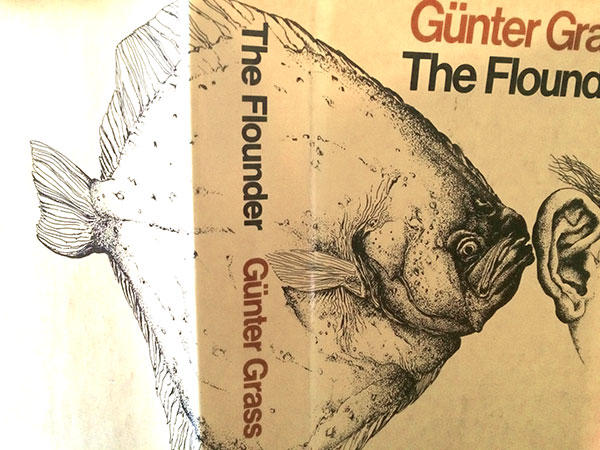
Note to self: scrumptious (the meal).
The flounder. It’s a noble fish – but it’s also a great story. They come together in this blogpost basically only because last night’s meal was far more successful than the image I took of it*. My camera decided to act up, and gave me something with such a fulvous hue I couldn’t even make it right with my (basic) Photoshop skills. This morning therefore I thought of another wonderful flounder which I could use as a stand-in, Günter Grass’ beautiful etching of a Baltic flatfish that appear on the cover of the creature’s eponymous novel. I bought the copy inside the dust jacket in this picture some 35 years ago, as soon as I could get my hands on the English translation.
‘The Flounder’ is, among other things, about history, bodily obsessions, gender politics, copulation, and food, and an ocean of humor runs through it. I thought an image of the cover would be a perfect placement here.
Yesterday was one of our anniversaries, and I was hoping the meal I cooked would be worthy. I sent a text to Barry from the Union Square Greenmarket, showing him the choice of seafood available that day, and he picked the flounder. He already had a super Rhineland Pinot Blanc picked out, and that evening I came up with what I thought would be recipes for the fish and vegetable accompaniment that would make a sympathetic pairing with the wine. The results were, well, . . . very good. The fish was superb, subtle, sweet, and succulent, and my almost serendipitous combining of ramps and asparagus (I had been surprised to find the latter in the market so early in the season, so I had to bring some home) offered a gentle, woody foil for it. A few small boiled potatoes also showed up, for texture and for a mild savory contrast (also for tradition).
I was surprised that the fillets were, for the first time in my experience, very easy to turn over, and eventually remove from the pan each in one piece. There was also virtually no browning, and yet the fish was perfectly done, and even sweeter, juicier than I ever remember experiencing with flounder. I may have used a bit more oil (and butter) than I usually do, and I know that I didn’t have the heat up very high when I first placed the fillets in the pan. Either or both of those conditions might explain that success. Oh, there was also the incredibly wonderful – and surprisingly distinctive – flavor of our local lemon, which was responsible for much of the flavor of the sauce.
We began with champagne, and the evening got even better as it advanced.
- flounder fillets from P.E. & D.D. Seafood, washed, dried, brushed with a bit of good white wine vinegar and salt, floured, sautéed briefly in olive oil and a touch of butter, removed to warm plates, the pan wiped with paper towels (or not), then butter, juice of a lemon from Fantastic Gardens of Long Island and parsley from Rogowski Farms added quickly and briefly heated, the resulting sauce poured over the fillets
- asparagus from Phillips Farms, boiled until barely tender, tossed with thinly-sliced ramps from Lucky Dog Organic which had been briefly sautéed in butter, the leaves of the ramps, cut as a chiffonade, then mixed in the pan, all seasoned with salt and pepper (the simple recipe is from The Experimental Gourmand, but I think I might try grilling the asparagus next time, for a slightly-carbonized flavor and more crunchy texture
- smallish German Butterball potatoes from Mountain Sweet Berry Farm, parboiled in salted water until nearly cooked through, drained, steamed dry, halved, tossed with a little butter and chopped winter savory from Whole Foods
- the wine was a German white, a Pfalz , Friedrich Becker Family Pinot Blanc 2013, ordered from Appellation Wines
- the music was Symphoniae of Nicolaus à Kempis
* This is the somewhat-off-color image of the meal:
